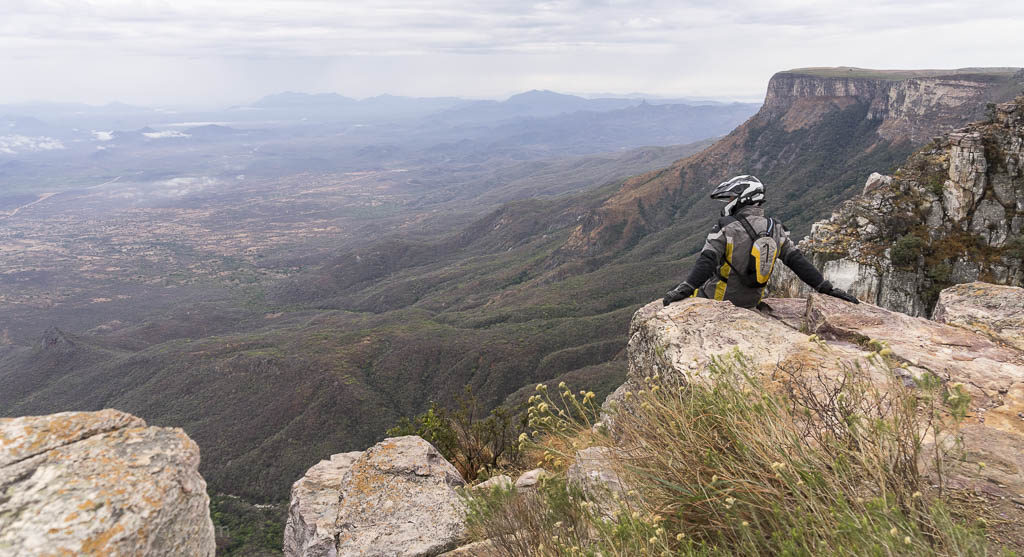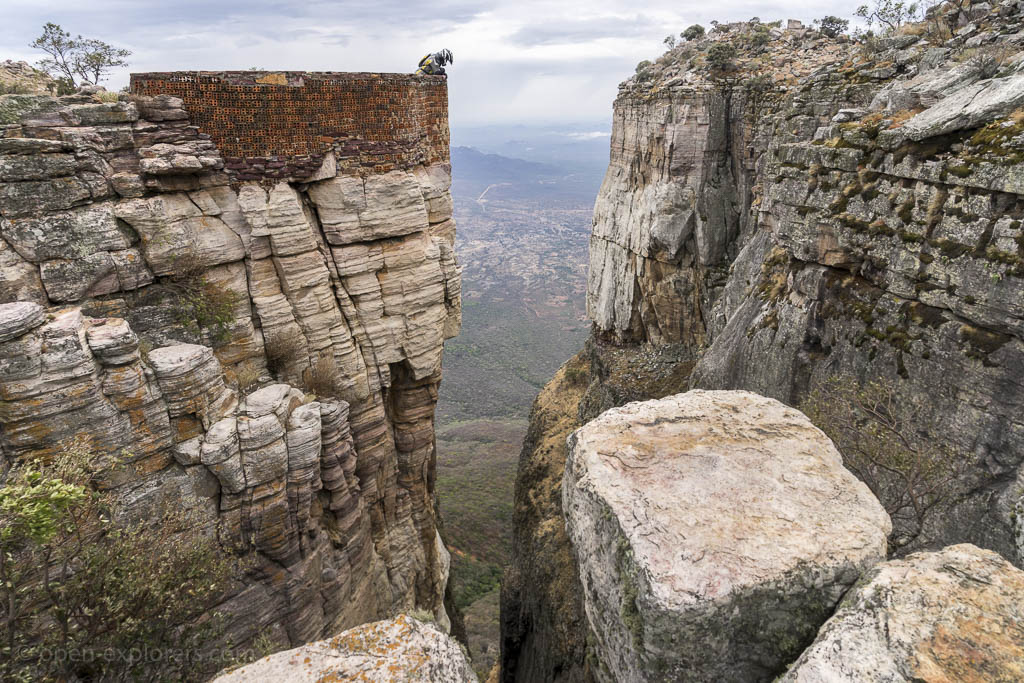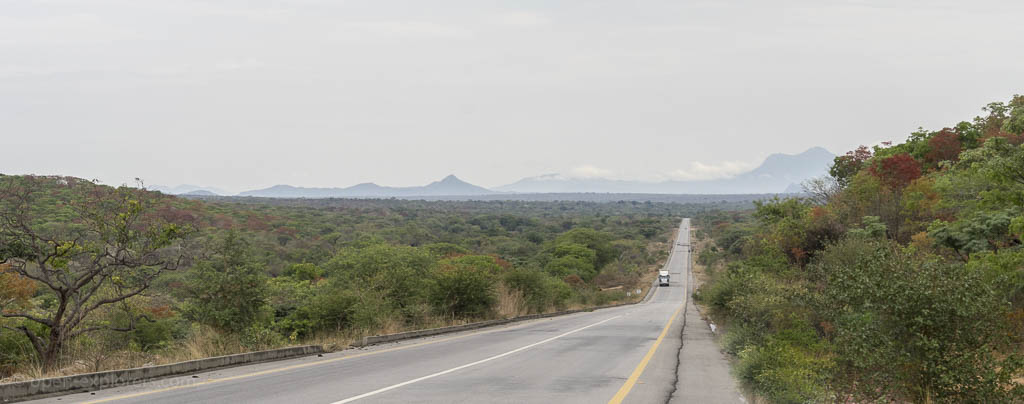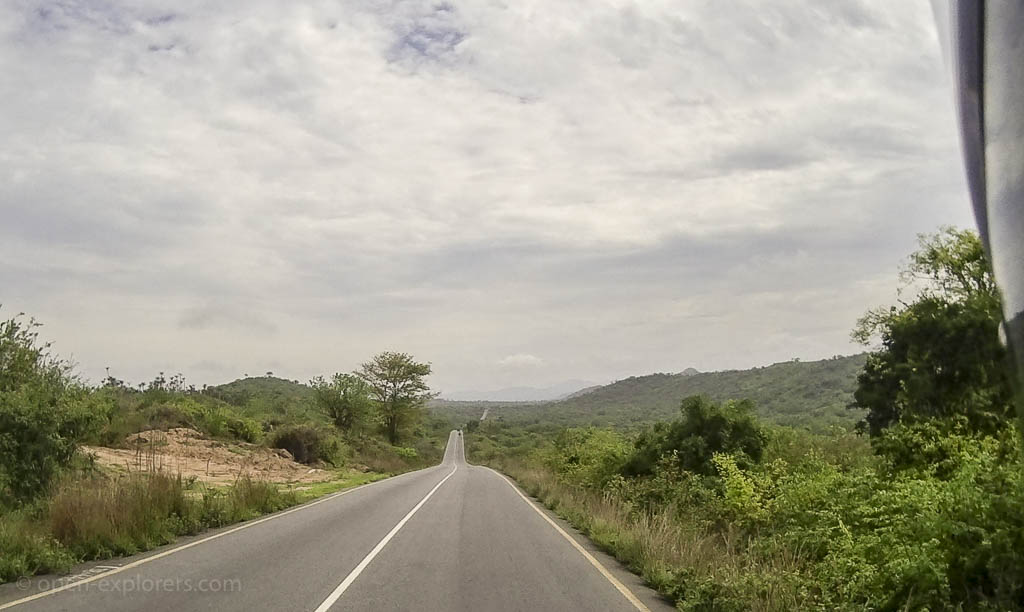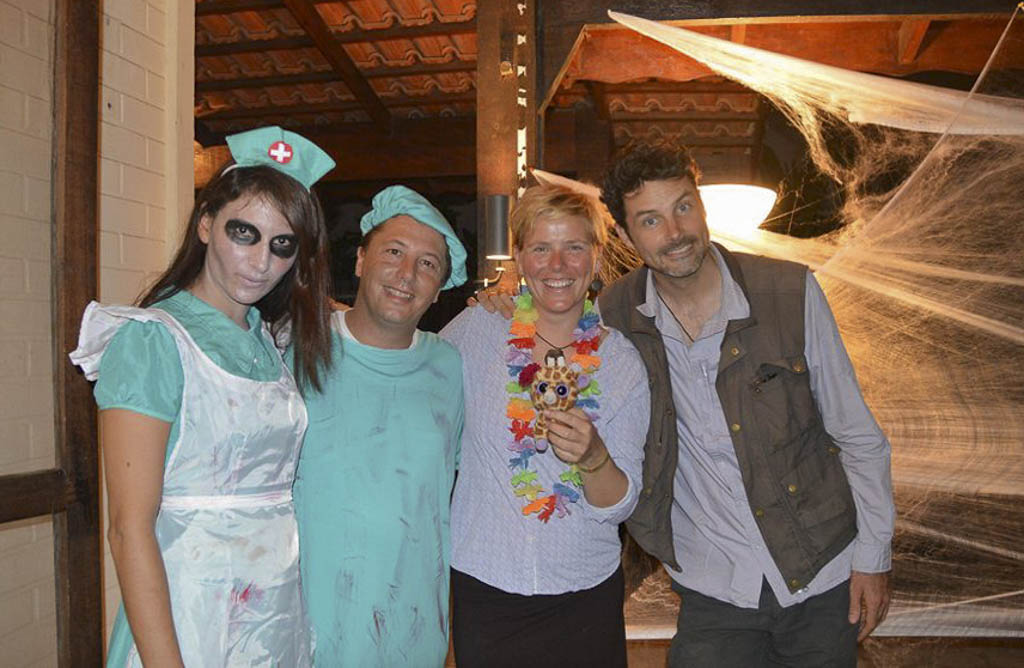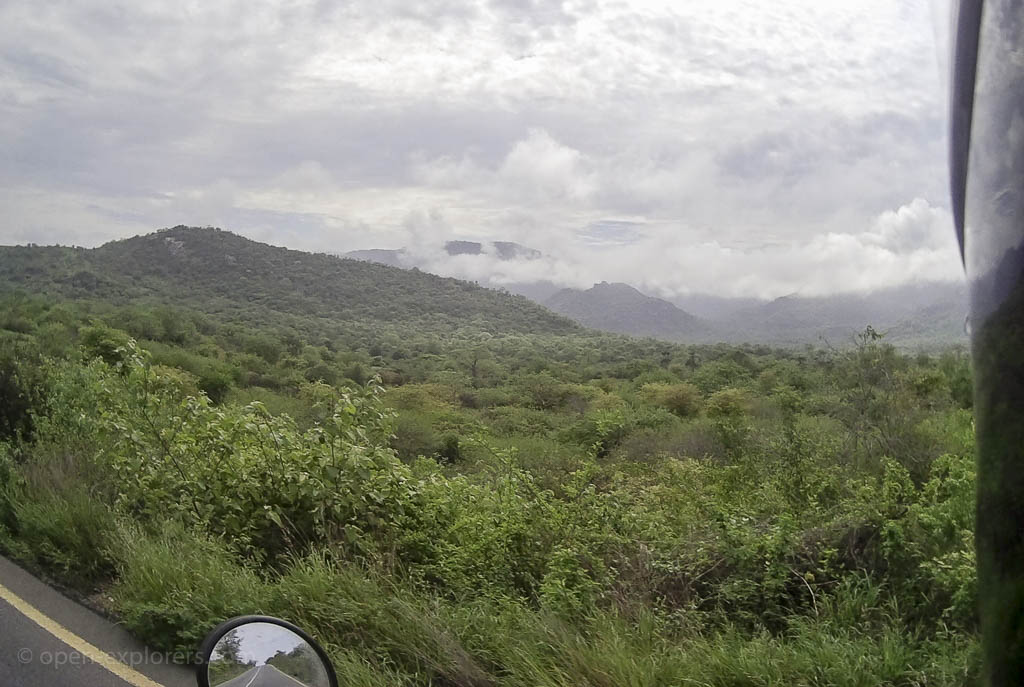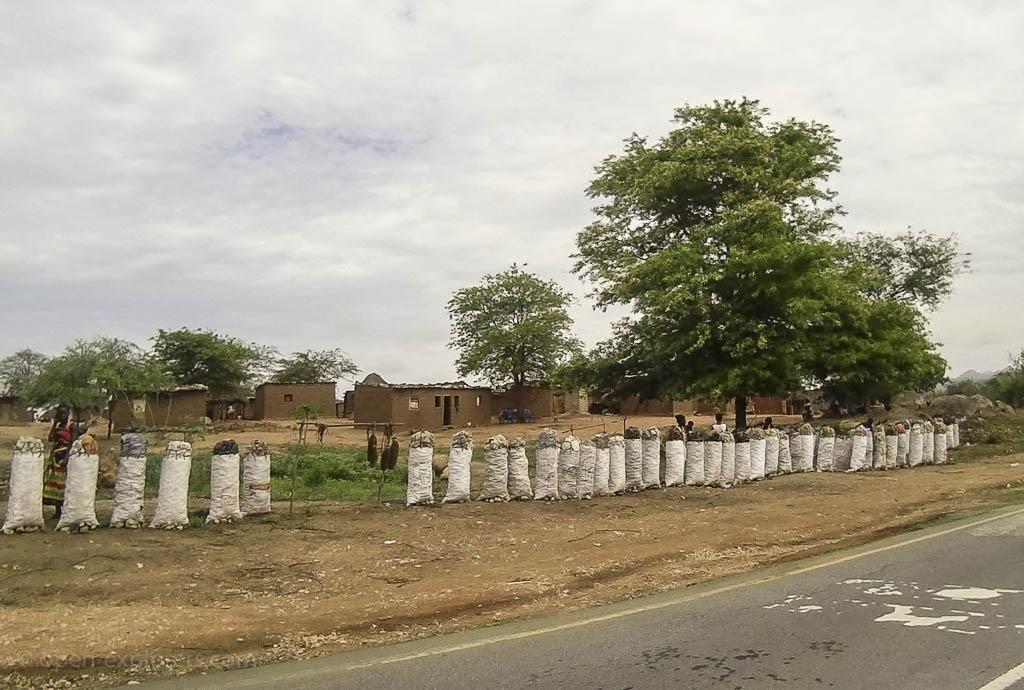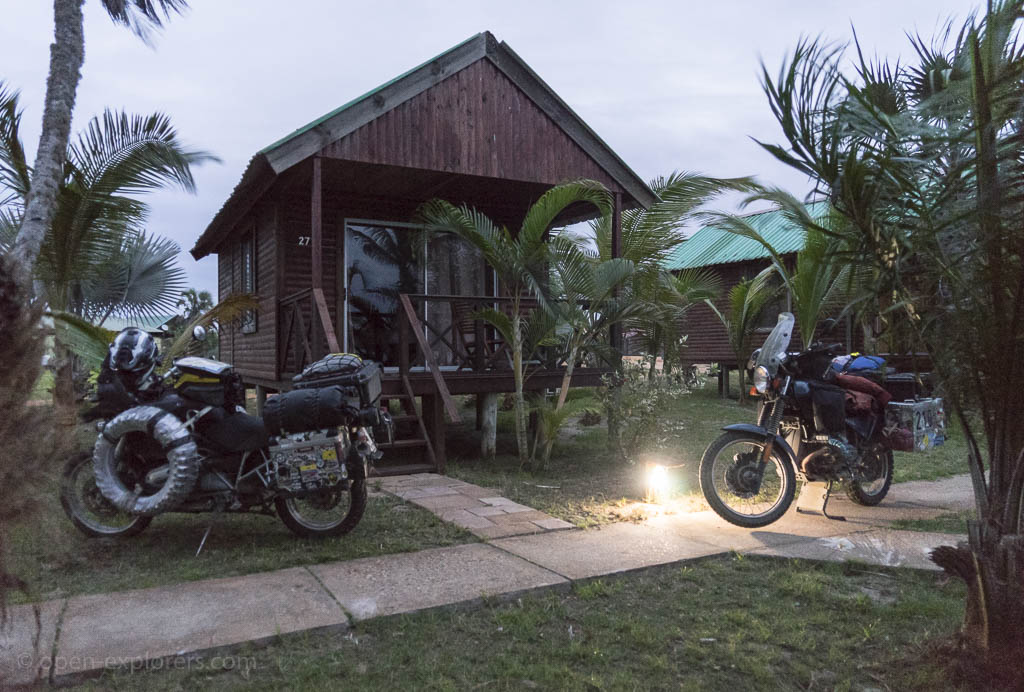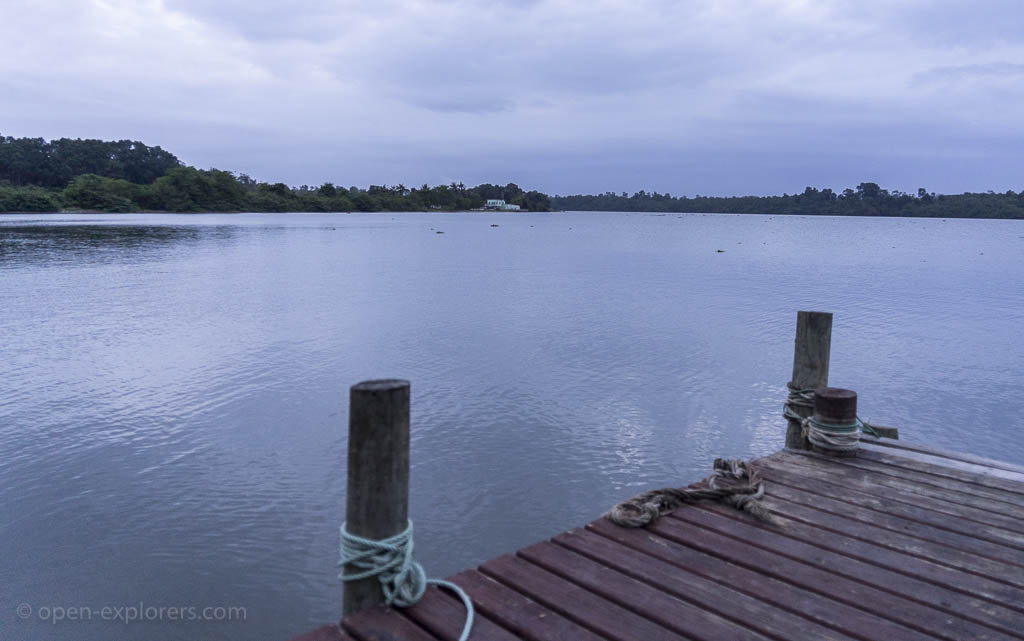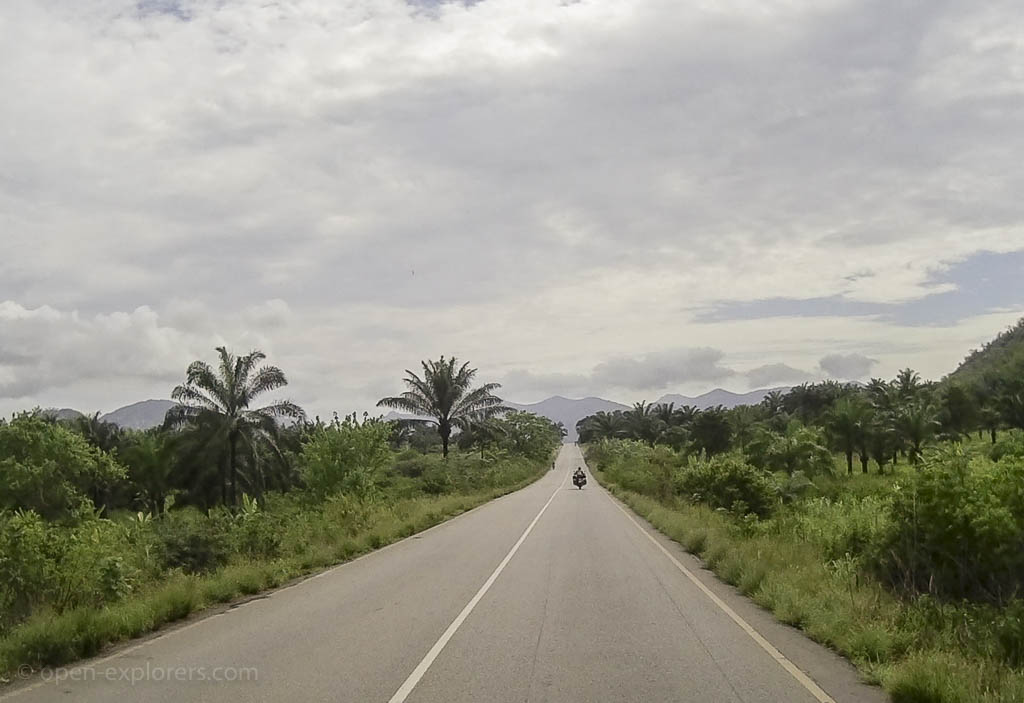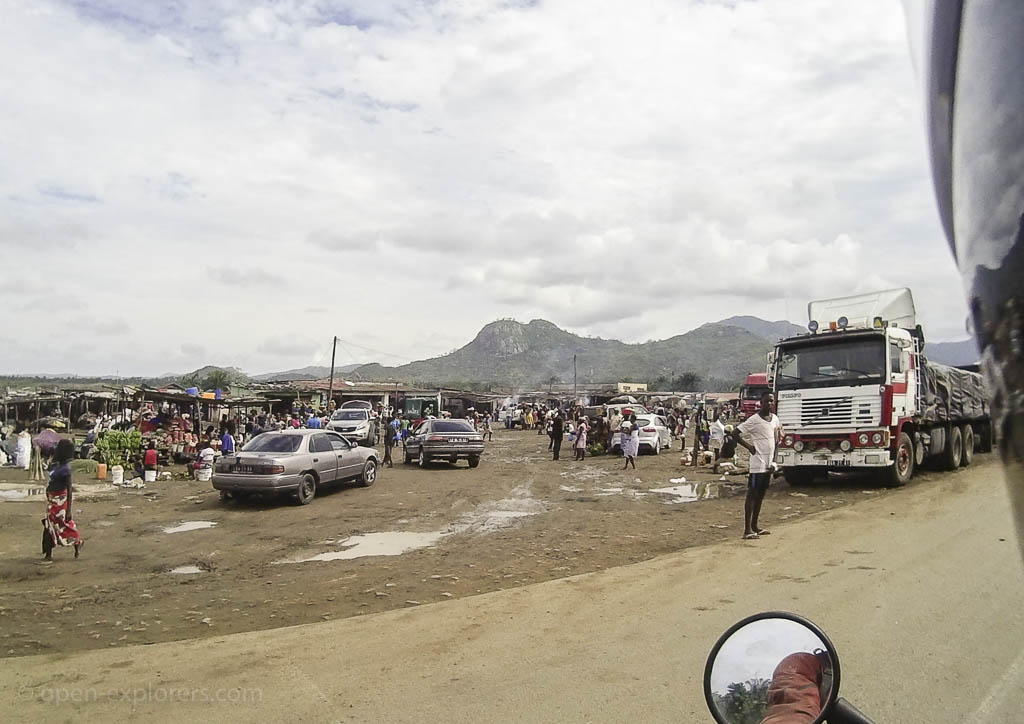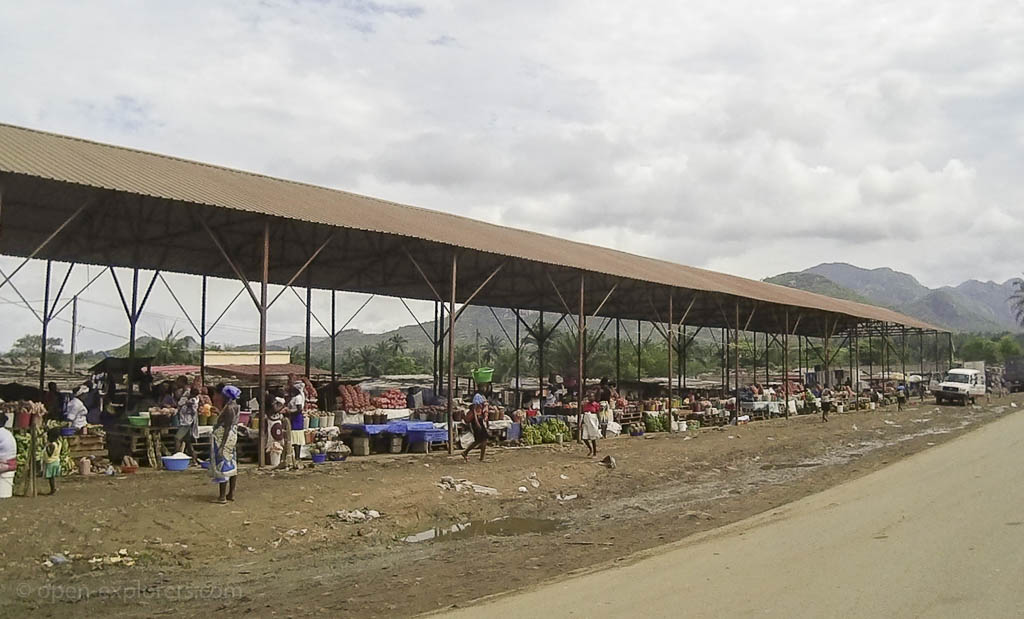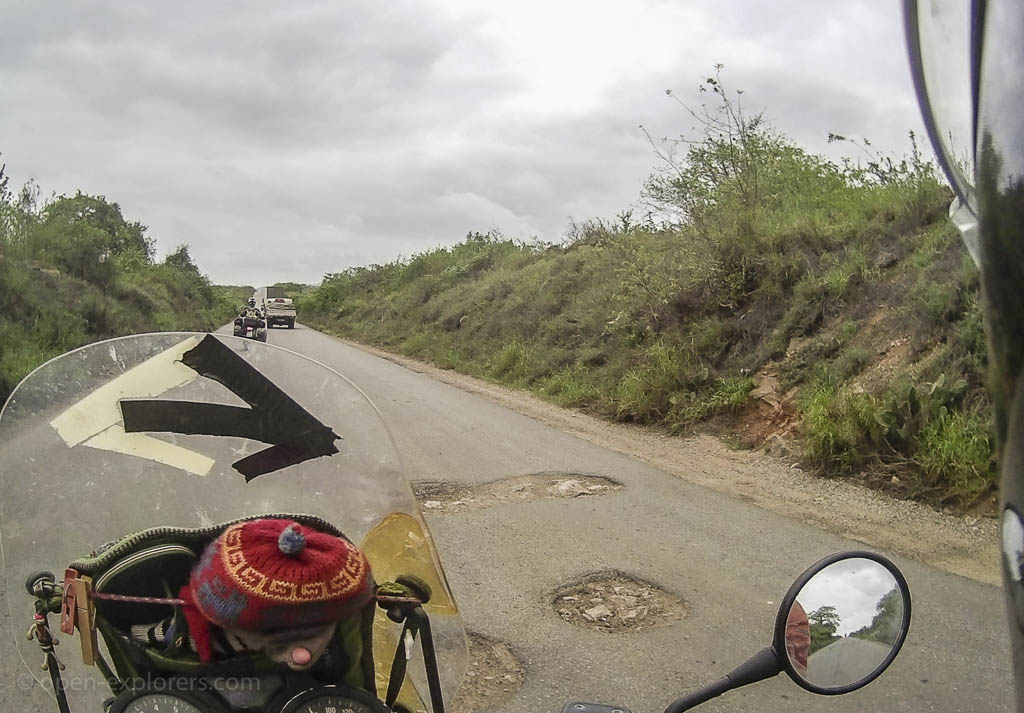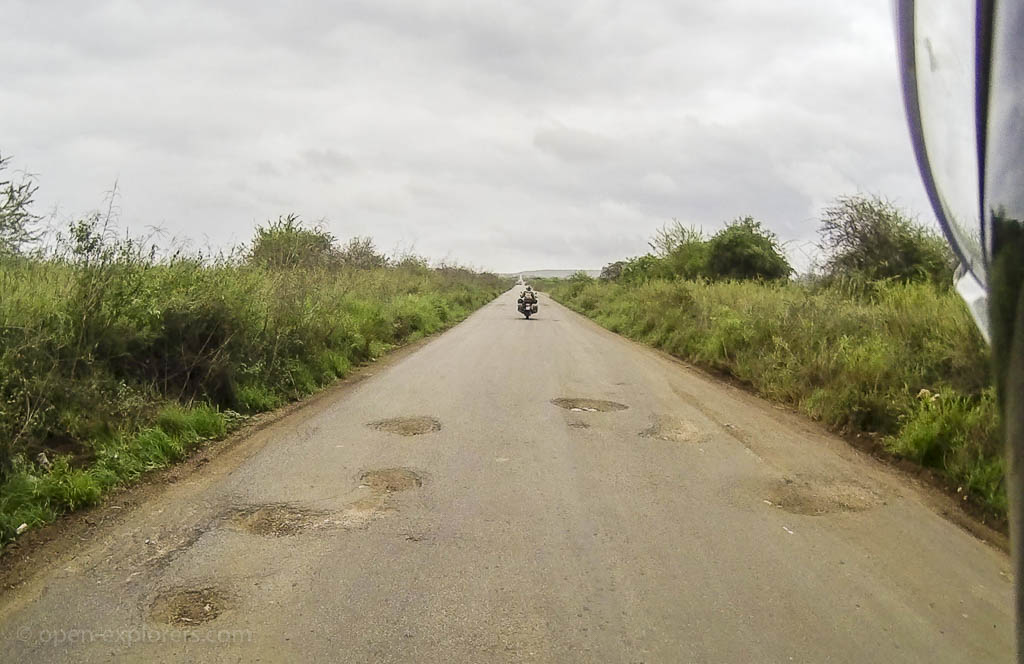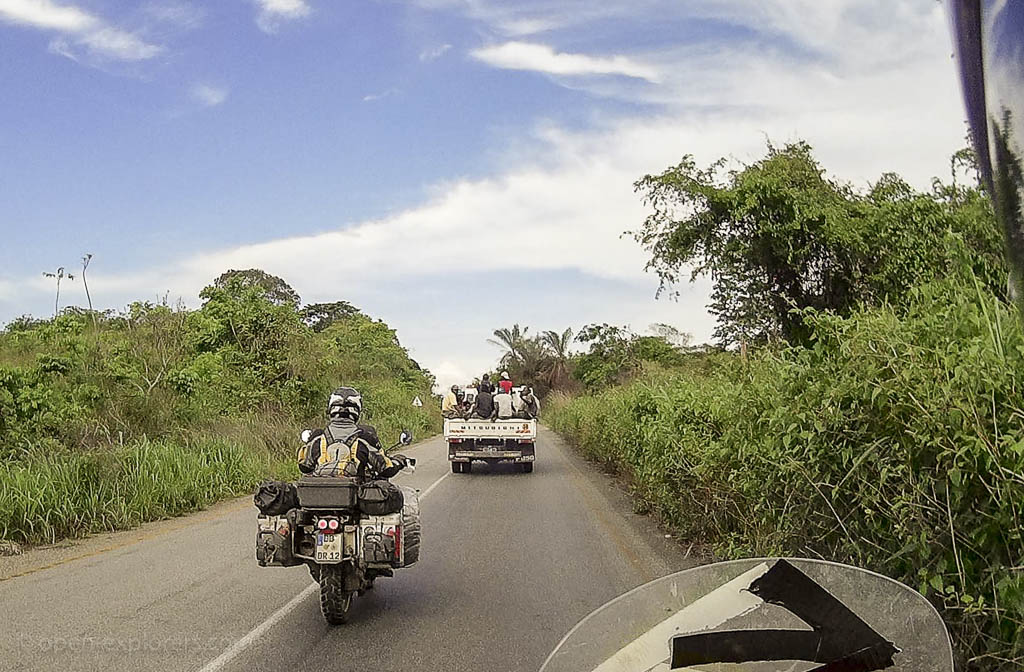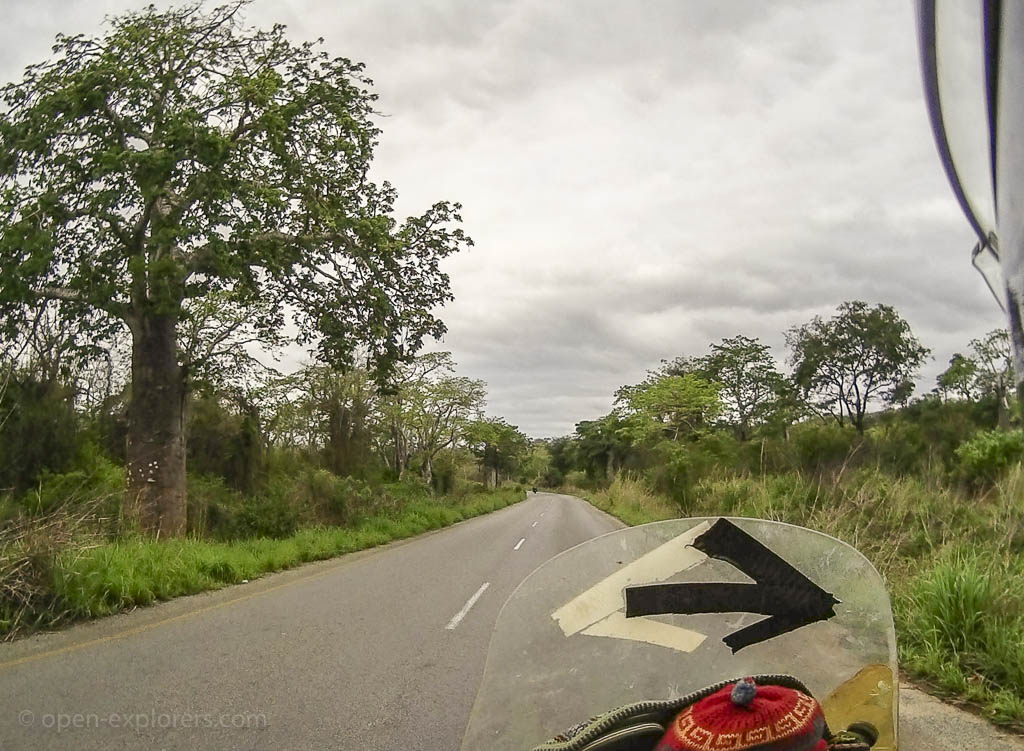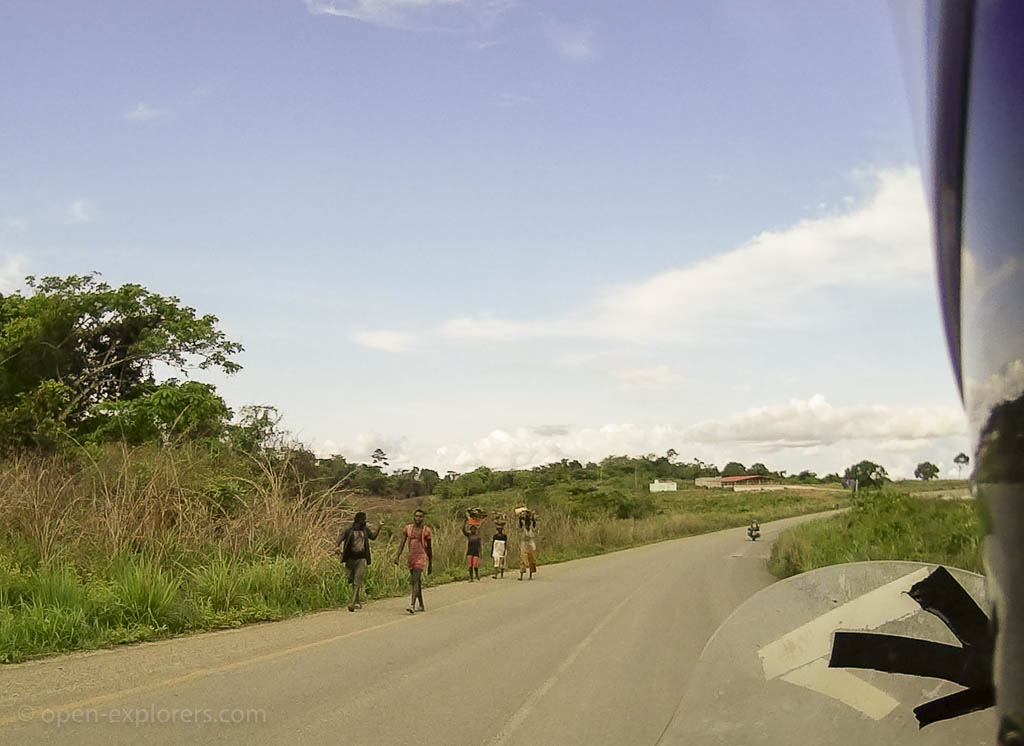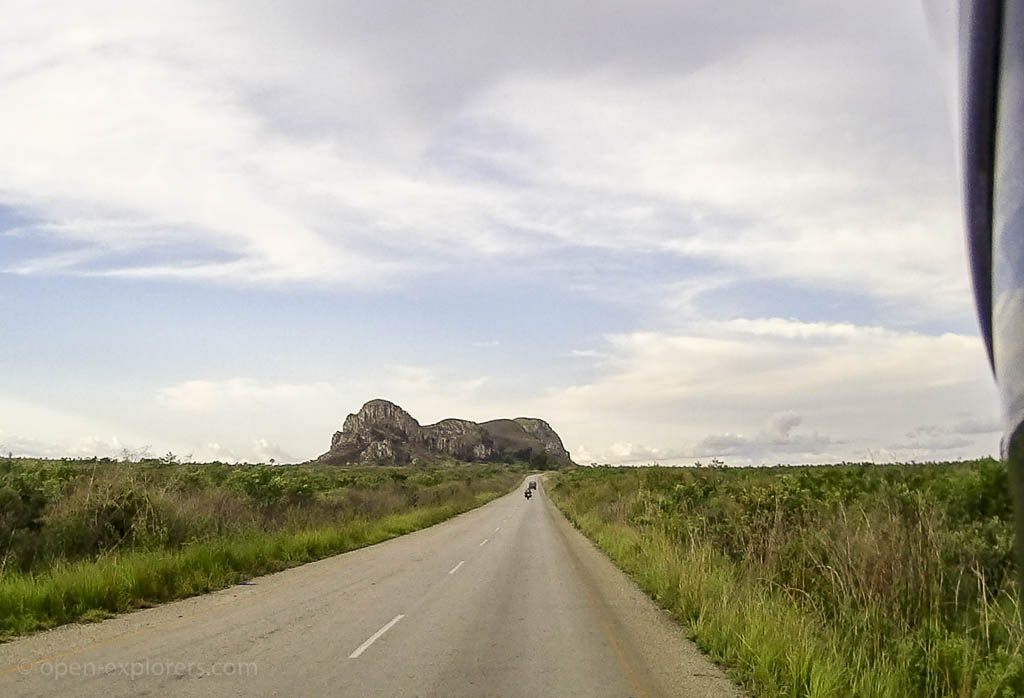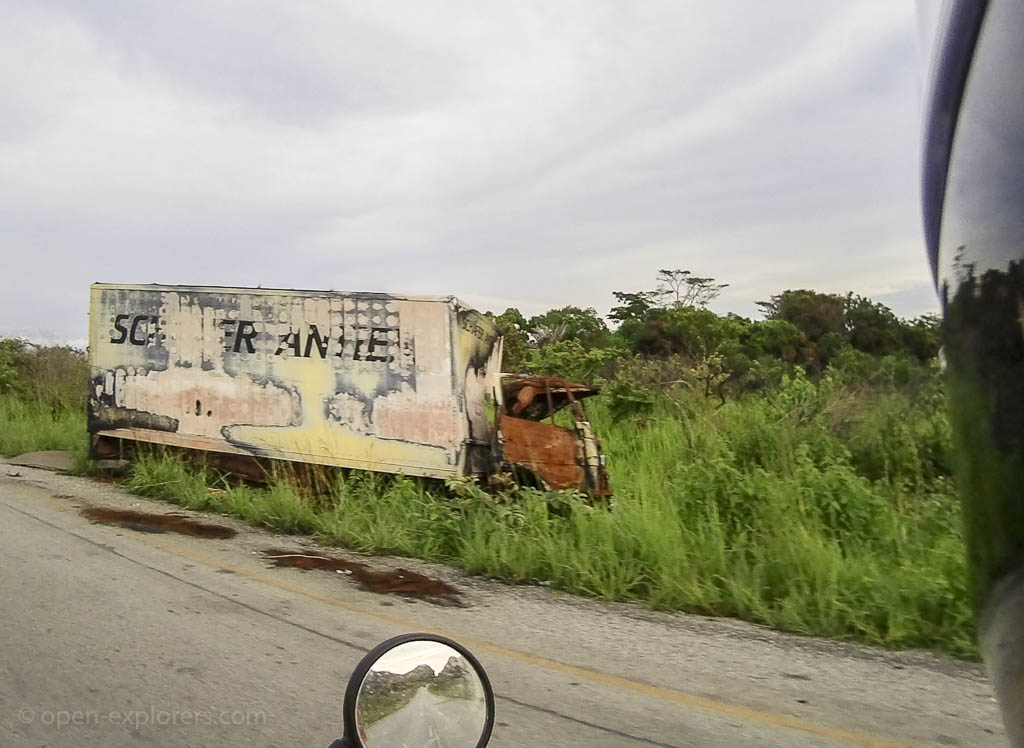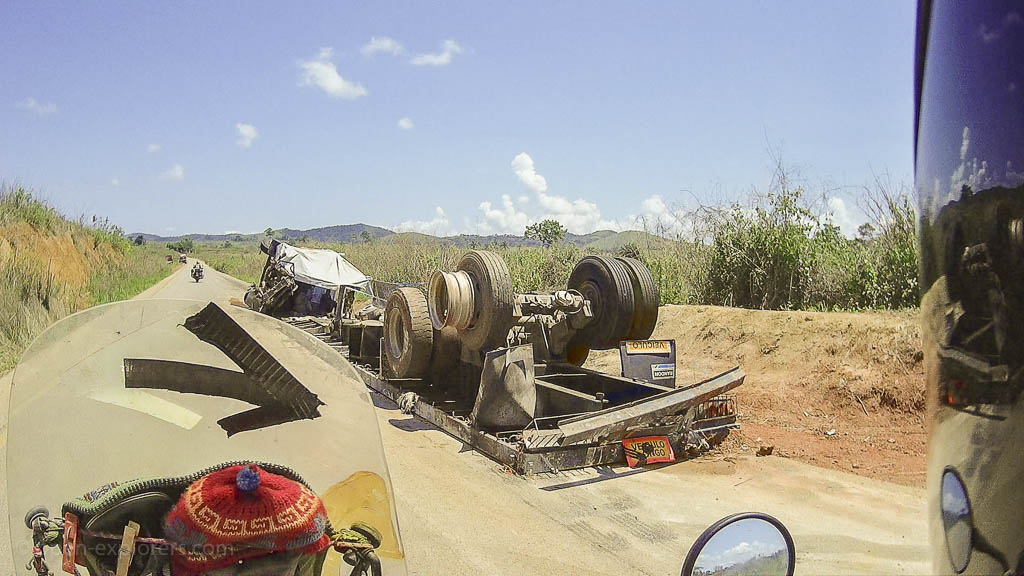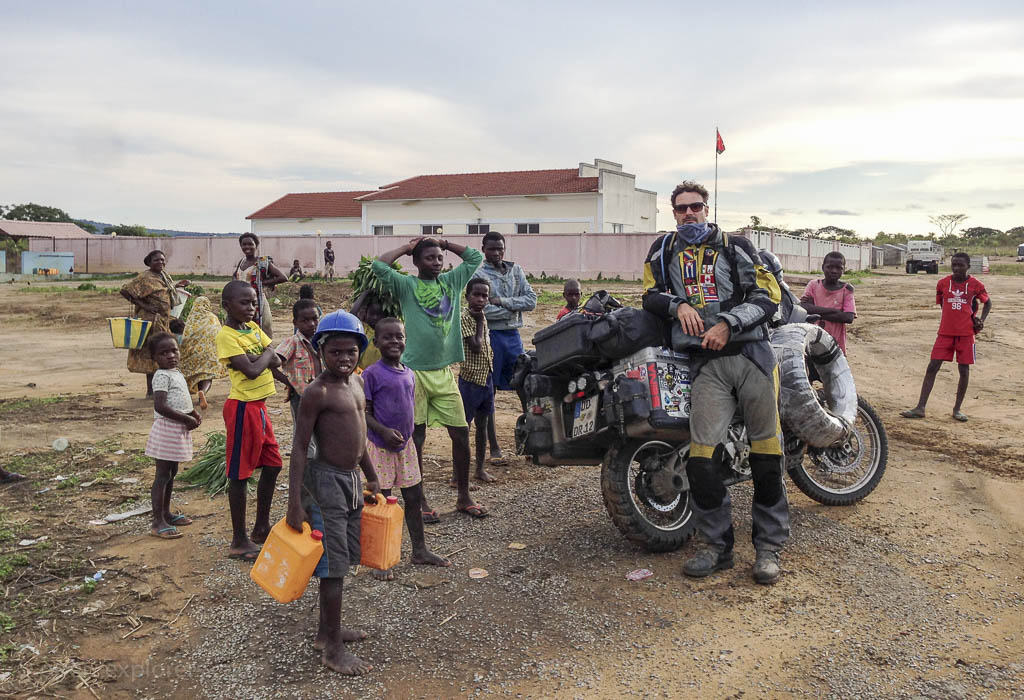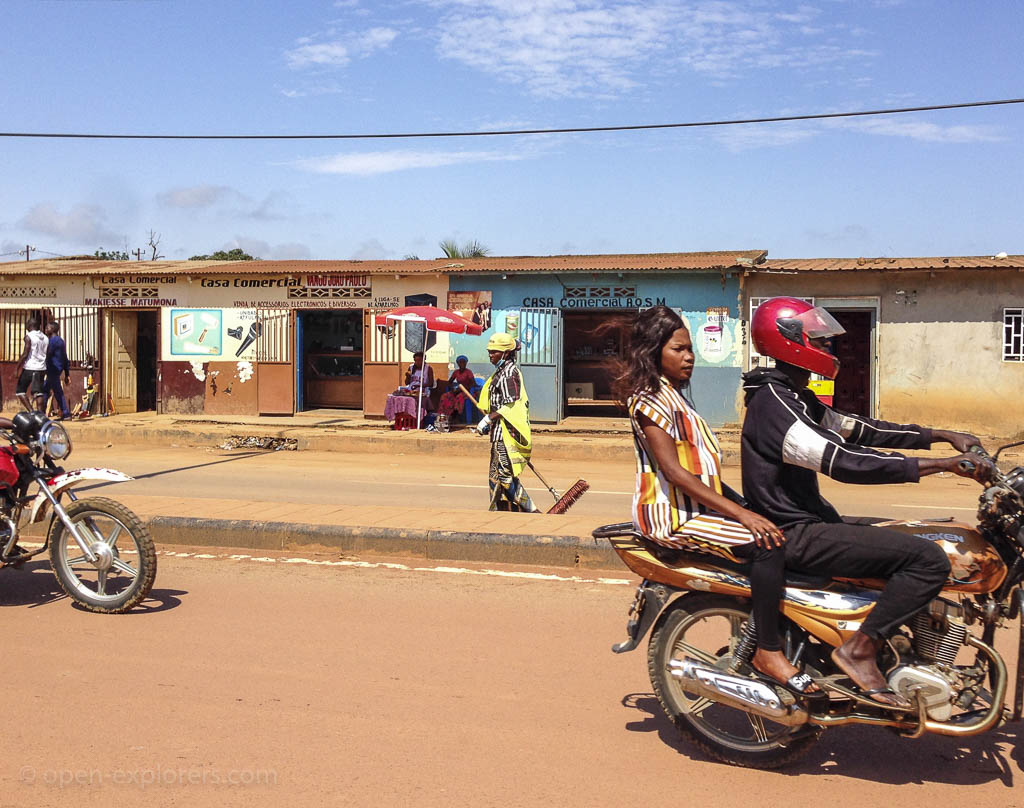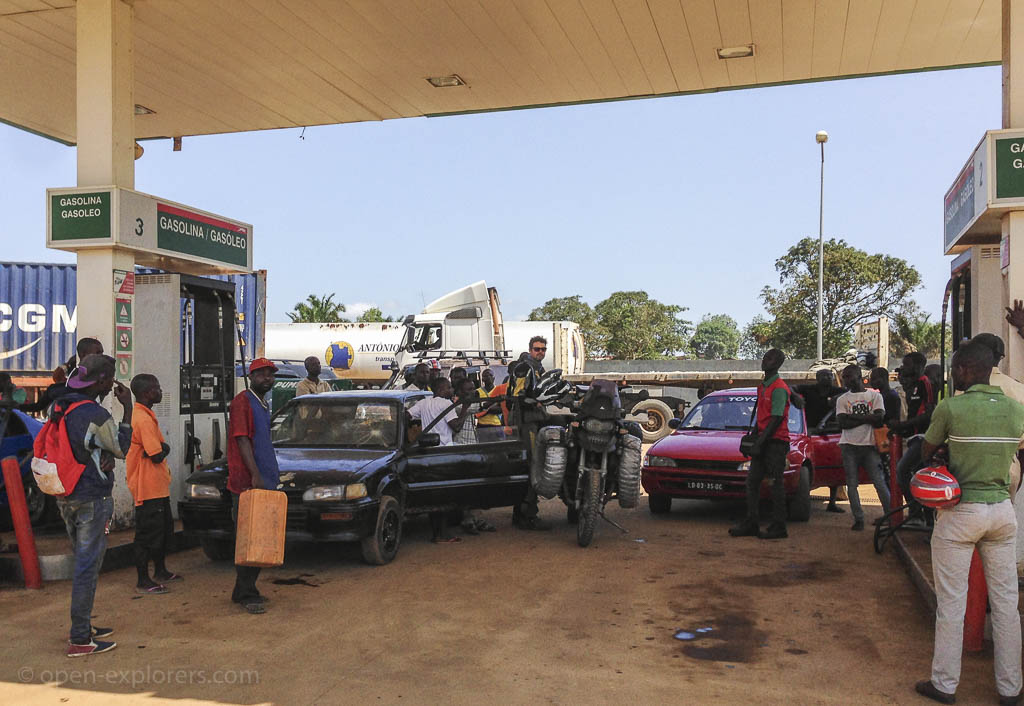Day 934- 938 - „We’re in Mexico now“…
…is what Daniel said to me over the intercom as we rode away from the border. It made me laugh out loud in my helmet because it precisecly summed up my feelings right now. Of course the contrast between Namibia and Angola isn’t as stark as between the USA and Mexico, but it did feel like we’ve just embarked on a new chapter of our jouney. Just like we did when we crossed the border in Tecate almost two years ago.
The countries of southern Africa have been fantastic, full of spectatcular landscapes, rich flora and fauna, politicaly stable and much more touristy than anticipated (except Lesotho). All in all relatively comfortable and pleasant countries to travel in. I don’t think the countries ahead of us are gonna be any less interesting or spectacular, but I am almost certain that they will present us with more challenges along the way. Some of the countries are still struggeling with political, economical and/or religious conflicts. The in Africa incredibly widespread corruption will probably be more tangible in every day life (road blocks, bribes, etc) and we’re also preparing ourselves for some less developed infrastructure. In addition to that we’re heading into the tropics where temeratures rarely fall below 30 degrees Celsius (86 F) and are usually accompanied by high humidity, which is an extra strain on the body in our aircondition-free everyday life. Until we reach the Sahara sometime next year, we’ll be travelling through areas with high risk of malaria almost constantly. Oh yeah, and last but not least there is the language barrier. For the first time on this trip (not taking into account our short jaunt to Brasil) we won’t be able to comunicate effortlessly in English or Spanish. I think it’s time to refurbish my school french a little. But here in Angola we’ll have to see how far we get with our non-existent Portuguese.
Border procedures took up a whole 5 hours and a lot of patience. Unfortunatelly we couldn’t thrash out more than the 5 days that we were granted by our transit visa that we had obtained in Germany. A 1-month tourist visa would have cost 500 Euros for the two of us and that’s why we had opted for the more reasonably priced (120 Euros) transit visa, hoping we could extend it in the country. We learnt that an extension would have maybe been possible but costs another 100 bucks per person and takes 2 days. If anything would go wrong we wouldn’t have enough days left to cross the country and every day overstayed costs another 100 bucks. Not the most tourist friendly country in the world. So 5 days it was. Not a lot for riding the 2.500 km (1.500 mi) that lay ahead of us but we just had to make the most of it. That led to us getting up before 5 am every morning and being ready to hit the road by sunrise.
The first day took us to Lubango. I had read somewhere that it was a nice city. But if this was nice, I didn’t really want to see the other cities. The sun was about to set and we stoped at a gas station in the city center to plan our next moves. On the one hand there was the dilemma with the money. The official exchange rate for the Angolan Kwanza to the $US is 1:165. The black market however offers around three times as much. Several times we have heard that Angola is an expensive country and Luanda among the worlds most pricy capitals. Looking at the prices for basic stuff and imagining we would have to exchange our money at the official rate we would be broke pretty soon. But at a third of the price it was just about an affordable country. Luckily the owner of the gas station could supply us with some cash and also suggested that we rented a small bungalow on the compound where he lived, up on a mountain. Thus within no time our second problem was also solved.
Whenever we get the chance we try to get information about the road conditions. The supportive gas station owner was once again able to help us out. He informed us that the road we planned to take through the interior of the country was indeed shorter but in a disastrous state. The longer route along the coast was the much better option he told us.
The road up until Lubango had been pretty good and there was hardly any traffic. We could have cruised along at 100 km/h (60 mi/h) if it wasn’t for the abundant herds of cows, sheep and goats that were roaming about unattended.
The next day already took us to the atlantic coast, to Lobito. We had choosen the place because it was a good distance to cover in one day and on the map it looked somewhat like a town where people go on holiday. After 500 km in the saddle in extreme heat we were totaly worn out and in deseperate need to find a place, get out of all the gear and just relax. But that proved to be more difficult than anticipated. There were plenty of hotels around on the narrow peninsula, that actually was a sort of resort town. But they were all way too expensive for our limited budget even when taking the black market exchange rate into account. Wild camping wasn’t an option either. Even before entering the country we had been warned several times not to wander away from the main roads too far. UXO (unexploded ordnance), remnants of a long lasting civil war (1975-2002) still bear a great risk in Angola.
Out of the blue the watchman that was guarding the house we were parked in front of, started talking to us. The usual communication difficulties led to him calling the resident of the house to come and talk to us. Or maybe he just thought the white people probably had come to see the other white people. Anyway, Luz, a super friendly young colombian lady appeared from the back of the house to chat with us. Only moments later she invited us in to have a cold drink on the terrace overlooking the ocean. We told her a bit about our journey and our fantastic experiences in her home country Colombia and before we knew it Luz invited us to the halloween party they had planed for that same evening. Many of the invitees were also expats working in Lobito or neighboring Benguela so we would get to meet their friends from France, Germany, Peru, Norway and Spain. After a while Luz’ french fiancée Jean-Marie joined us on the terrace and suggested we could camp on the beach in front of their house. Therefore we had solved the last remaining problem of the day and could proceed with relaxing and enjoying the nice view and good company. Now it was definitely time for a dip in the refreshing ocean and a cold beer. And there was plenty of it because Jean-Marie works for Coca-Cola. Interestingly the American multinational beverage corporation also has its hands in half of Africas beer production.
And that’s how it came about that only an hour after everything kinda sucked we found our selves refreshed and happy in the middle of the preparations for a costume party. In the end we slept at Arno’s place, one of the friendly party guests that lived nearby and kindly offered his spare room to us. Vero, another good friend of the hosts even prepared a packed breakfast for us to take on the road.
The next day we hit the road not quite at sunrise but still in the early morning hours and headed towards Luanda on the worst stretch of asphalt I’ve ever been on. The road was a mere patchwork of potholes that came in all sizes. At times it felt like one of those very old video games where all you have to do is avoid the obstacles coming your way. Level 1 just consisted of all the potholes, some of them filled with water. In level 2 the road got a lot narrower and Level 3 added plenty of oncoming traffic, mainly big trucks that were also trying to avoid hitting the holes. Remanants of former (less succesful) players could be seen in large numbers on both sides of the road. Actually it was pretty shocking how many car and truck wrecks we saw in just one day. I think it’s safe to say that we never rode more than two kilometers between two wrecks.
With another 500 km behind us and the sun about to set we found ourselves with the same problem we had the previous day. Far and wide no sight of an affordable accommodation. So we just kept on riding towards a lodge we found on the map. This was our last chance but by now I had given up any hope of finding a reasonably priced lodging. Riding into the darkness any longer made no sense and we would just have to bite the bullet. At the end of a bumpy and sandy track we reached a cluster of really nice looking bungalows on the bank of the river Kwanza. There we were welcomed by the wonderful Mannie. She denied us our wish to camp and said: „What you need is a nice bed, a hot shower and a propper meal!“ and offerd us one of the luxurious bungalows at a rather symbolic price. Over a nice big plate of food and a bottle of delicious South African wine Mannie who is originally from South Africa, told us a little about herself and her life in Angola and we spent a very enjoyable evening together.
As I have mentioned before we try to avoid riding through big cities as much as possible. But even the ring road that bypasses Luanda took us through some pretty hectic suburbs of the capital city. Even very early in the morning traffic was chaotic and to make matters just a little worse it started to rain. Amidst the general tension of getting through chaotic traffic unharmed I noticed that the battery light of my bike was behaving in a funny way. It turned out that alternator was broken and didn’t charge the battery any longer. With the time restraints on our hands we didn’t have much choice. The only viable option seemed to be a second battery that Daniel could charge with his bike while riding. As soon as it becomes necessary we could swap the empty battery for the recharged one. Luckily we were still in the peripheries of Luanda and very close to a big market. It was impossible to find the right kind, so a much smaller battery would have to do. That’s better than nothing. From now on I would ride with the lights off and also save power by not using the indicators. It’s not like anyone here cares anyways. Let’s just hope it works.
Even though we didn’t get much chance to mingle with the locals, we take away a very positive picture. Wherever we passed through we were greeted by the friendly people. Virtually everyone on the road side and in the villages waved at us and gave us thumbs up. And whenever we stoped somewhere interested people would appraoch us and strike up a conversation about the bikes and the journey.
Also due to the time restrictions there weren’t many chances to stop and take photos so most of what follows now was taken with my helmet cam. The quality might not be as good but it gives you an idea of how we perceive our surroundings from astride our motorcycles.
Joey
Tag 934-938 - „Jetzt sind wir in Mexiko“…
…sagte Daniel über die Interkom als wir uns langsam von der Grenze entfernten. Und ich musste laut in meinem Helm lachen, denn das brachte genau auf den Punkt wie ich mich gerade fühlte. Der Unterschied zwischen Namibia und Angola ist zwar bei Weitem nicht so groß wie der zwischen den USA und Mexiko, dennoch hatte ich das Gefühl dass nun ein neuer Abschnitt der Reise angebrochen war, genau wie damals an der Grenze in Tecate.
Die Länder des südlichen Afrikas die wir bisher bereist haben waren wunderbar, voller beeindruckender Landschaften, Flora und Fauna, politisch stabil und vor Allem auch touristischer als erwartet (mit der Ausnahme Lesotho). Alles in Allem also verhältnismäßig bequem zu bereisen. Ich denke nicht, dass die Länder die vor uns liegen weniger toll oder interessant sein werden, aber eine größere Herausforderung allemal. Einige der Länder haben nach wie vor mit politischen, wirtschaftlichen und/oder religiösen Konflikten zu kämpfen, die in ganz Afrika sehr verbreitete Korruption wird wahrscheinlich deutlicher im Alltag spürbar sein (Schmiergelder an Straßensperren, etc.) und wir rechnen auch mit einer weniger entwickelten Infrastruktur. Hinzu kommt, dass wir uns nun in tropische Breiten begeben wo die Temperaturen ständig über 30 Grad liegen und die Luftfeuchtigkeit in der Regel sehr hoch ist was unseren klimaanlagenfreien Alltag besonders anstrengend macht. Bis wir irgendwann nächstes Jahr die Sahara erreichen reisen wir durchgängig in Gegenden mit sehr hohem Malariarisiko. Ach ja und dann wäre da noch die Sprachbarriere. Zum ersten Mal auf der Reise (mal von der kurzen Zeit in Brasilien abgesehen) können wir uns nicht unproblematisch mit Englisch oder Spanisch verständigen. Ich hab das Gefühl es ist an der Zeit mein Schul-Französisch etwas aufzupolieren. Aber hier in Angola ist erstmal Portugiesisch dran.
Die Grenzprozedur kostete uns ganze 5 Stunden und viel Geduld. Leider konnten wir nicht mehr als die 5 Tage die uns unser Transitvisa gewährte herausschlagen. Ein 1-Monats-Touristenvisa hätte für uns beide zusammen 500 Euro gekostet und somit haben wir uns für das mit 120 Euro etwas erschwinglichere Transitvisa entschieden, in der Hoffnung es im Land verlängern zu können. Eine Verlängerung wäre vielleicht auch möglich gewesen, hätte aber 100 Euro pro Person gekostet und 2 Tage gedauert. Wäre irgendwas schief gegangen hätten die verbleibenden Tage nicht mehr für den Transit gereicht. Und jeder überzogene Tag kostet ebenfalls 100 Euro pro Person wie wir später erfuhren. Nicht das touristenfreundlichste Land würd ich sagen.
5 Tage waren nicht gerade viel für die 2.500 km die vor uns lagen, aber wir mussten eben das Beste daraus machen. Das führte dazu, dass wir jeden Tag schon vor 5 Uhr aufstanden und bei Sonnenaufgang schon auf den Motorrädern saßen.
Der erste Tag führte und nach Lubango. Irgendwo hatte ich gelesen, dass es eine schöne Stadt sein soll. Aber wenn das schön ist, will ich die anderen Städte eigentlich gar nicht sehen. Die Sonne war gerade dabei unterzugehen und wir hieleten an einer Tankstelle im Stadtzentrum um unsere nächsten Schritte zu planen. Zum einen war da das Dilemma mit dem Geld. Der offizielle Wechselkurs zwischen $US und angolanischen Kwanza ist 1:165. Auf dem Schwarzmarkt bekommt man etwa das Dreifache. Wir hatten schon oft gehört, dass Angola teuer sei und die Hauptstadt Luanda eine der teuersten Städte der Welt. Und wenn ich mir die Preise anschaue und vorstelle, dass wir unser Geld zum offiziellen Kurs wechseln müssten, wären wir ziemlich schnell pleite. Mit dem Schwarzmarktkurs ist es gerade so ein erschwingliches Land. Der Tankstellenbesitzer konnte uns glücklicherweise unsere Dollars tauschen und schlug vor, dass wir einen kleinen Bungalow in seiner Nachbarschaft für die Nacht mieten. Das zweite Problem war also auch geklärt.
Wann immer möglich versuchen wir Informationen über die Strassenverhältnisse zu bekommen. Ebenfalls von dem hilfsbereiten Tankwart erfuhren wir, dass die Route durchs Land die wir gewählt hatten zwar kürzer war als die alternative Strecke entlang der Küste, aber in katastrophalen Zustand. Die Straße bis hier nach Lubango war ziemlich gut gewesen und ohne Verkehr. Man hätte wahrscheinlich durchgängig 100 km/h fahren können, wären da nicht die unglaublich vielen frei herumlaufenden Schaf-, Ziegen- und Kuhherden gewesen.
Der nächste Tag brachte uns auch schon an die Küste nach Lobito. Wir hatten die Stadt ausgewählt, weil es eine gute Tagesdistanz war und auf der Karte irgendwie nach Urlaubsort aussah. Nach 500 km im Sattel bei extremer Hitze waren wir total erschöpft und wollten einfach nur irgendwo ankommen. Das war allerdings schwieriger als erwartet. Auf der Halbinsel gab es zwar reichlich Hotels, denn es ist wirklich eine Art Urlaubsort, die waren jedoch auch mit Schwarzmarktkurs weit außerhalb unserer Preisklasse. Wild Campen war auch keine Option, denn in Angola sind aus dem langjährigen Bürgerkrieg (1975-2002) übrig gebliebene Landminen nach wie vor ein sehr großes Problem. Davor die Hauptstraßen zu verlassen wurden wir schon bevor wir überhaupt in Angola waren immer wieder gewarnt.
Auf einmal sprach uns der Wachmach, der offensichtlich das Haus vor dem wir standen bewacht, an. Die üblichen Verständigungsprobleme führten dazu, dass er die Bewohnerin des Hause, eine sehr freundliche junge Kolumbianerin, holte. Vielleicht hat er auch gedacht, die Weißen wollen bestimmt zu den anderen Weißen. Wir unterhielten uns kurz mit Luz am Zaun und wurden direkt auf ein kühles Getränk auf die Veranda mit Blick auf’s Meer eingeladen. Wir erzählten ein bisschen von unserer Reise und unseren tollen Erfahrungen in Kolumbien und bevor wir uns versahen lud uns Luz zu ihrer Halloween-Party am Abend ein, zu der viele andere Expats, darunter Franzosen, Deutsche, Peruaner, Norweger, Spanier usw. kommen würden. Luz’ französischer Verlobter Jean-Marie schlug vor wir könnten doch am Strand vorm Haus schlafen und somit war auch das Problem gelöst. Jetzt war’s wirklich Zeit für eine Erfrischung im Ozean und ein kühles Bier. Davon gab’s reichlich, denn Jean-Marie arbeitet für Coca-Cola, die interessanterweise die Bierproduktion halb Afrikas unter sich vereinen. Und so kam es, dass wir nur eine Stunde nachdem alles irgendwie doof war, uns erfrischt mitten in den Vorbereitungen für eine Kostümparty wiederfanden. Geschlafen haben wir dann übrigens bei Arno, einem der Partygäste der um die Ecke wohnte und ein Gästezimmer hatte. Vero, eine andere französische Freundin der Gastgeber hat uns am Abend sogar noch ein kleines Frühstückspaket gepackt.
Am nächsten Tag ging es (erst etwas nach Sonnenaufgang) auf dem dem schlechtesten Stück Asphalt das ich je gesehen hab Richtung Luanda. Die Straße war so von Schlaglöchern zerfressen, dass ich teilweise das Gefühl hatte in einem dieser alten Videospiele zu sein, wo man nichts weiter tun muß als Hindernissen auszuweichen. Level 1 brachte die vielen Schlaglöcher. In Level 2 wurde die Straße sehr schmal und in Level 3 kam reichlich Gegenverkehr hinzu der sich ebenfalls um die Schlaglöcher schlängelte. Die Übrigbleibsel anderer (nicht so erfolgreicher) Spieler waren zahlreich auf beiden Seiten der Straße zu sehen. Genau genommen war es ziemlich schockierend wie viele Auto- und LKW-Wracks wir an nur einem Tag gesehen haben. Ich bin mir sicher, dass die nie mehr als 1 oder 2 Kilometer auseinander lagen.
Weitere 500 km später standen wir kurz vor Sonnenuntergang wieder vor dem selben Problem wie am Vortag. Weit und breit keine erschwingliche Unterkunft. Als wir eine in der Karte verzeichnete Lodge ansteuerten hatte ich für heute die Hoffnung etwas preiswertes zu finden bereits aufgegeben. In der Dunkelheit weiterzufahren war keine Option und so mussten wir wohl in den sauren Apfel beißen. Am Ende einer holprigen Sandstraßen kamen wir zu einer Ansammlung von schicken Bungalows direkt am Kwanza Fluss, wo uns die wunderbare Mannie begrüßte. Unseren Wunsch zu Zelten schlug sie uns ab. Sie sagte: „Was ihr braucht ist ein weiches Bett, eine heiße Dusche und was ordentliches zu essen!“ und bot uns einen der luxuriösen Bungalows zu einem eher symbolischen Preis an. Bei einem leckeren Abendessen und einer Flasche Wein erzählte uns Mannie, die eigentlich aus Südafrika ist, ein bisschen von sich und ihrem Leben in Angola. Ein rundum schöner Abend.
Wie schon mal erwähnt versuchen wir große Städte so gut wie möglich zu vermeiden. Aber auch die Umgehungsstraße um Luanda führt durch hektische Aussenbezirke. Der Verkehr war schon am frühen Morgen chaotisch und zu allem Überfluss mußte es auch noch anfangen zu regnen. Mitten in der Angespanntheit es heile durchs Chaos zu schaffen fiel mir auf, dass sich die Batterieleuchte irgendwie seltsam verhielt. Es stellte sich heraus, dass die Lichtmaschine kaputt war und die Batterie nicht mehr geladen wurde. Zum Glück befanden wir uns noch im Dunstkreis von Luanda und ganz in der Nähe eines großen Marktes. Durch den Zeitdruck war unsere einzige Option eine weitere Batterie zu kaufen die Daniel während der Fahrt an seinem Motorrad lädt. Sobald meiner Batterie der Saft ausgeht können wir sie durch die neue ersetzten und ebenfalls bei Daniel laden. Leider konnten wir nur eine viel zu kleine Batterie auftun, aber immerhin. Hoffen wir mal dass es klappt. Ich werde ab sofort ohne Licht fahren und auch nicht mehr blinken um Strom zu sparen, aber das stört hier eh keinen.
Auch wenn wir nicht viel Gelegenheit hatten mit den Menschen in Kontakt zu kommen, haben wir doch ein sehr, sehr positives Bild gewonnen. Wo immer wir lang kamen wurden wir von fast jedem mit freundlichem Winken und Daumen hoch begrüßt. Wenn wir irgendwo anhielten kamen die Leute auf uns zu und haben uns soweit es ging interessiert zu unserer Reise und den Motorrädern befragt.
Ebenfalls der knappen Zeit Zeit geschuldet konnten wir nicht all zu oft anhalten um Fotos zu machen und so sind viele Bilder mit meiner Helmkamera aufgenommen. Qualitativ vielleicht nicht so super, aber so bekommt ihr mal einen Eindruck von der Perspektive aus der wir unsere Umgebung beim Fahren sehen.
Joey
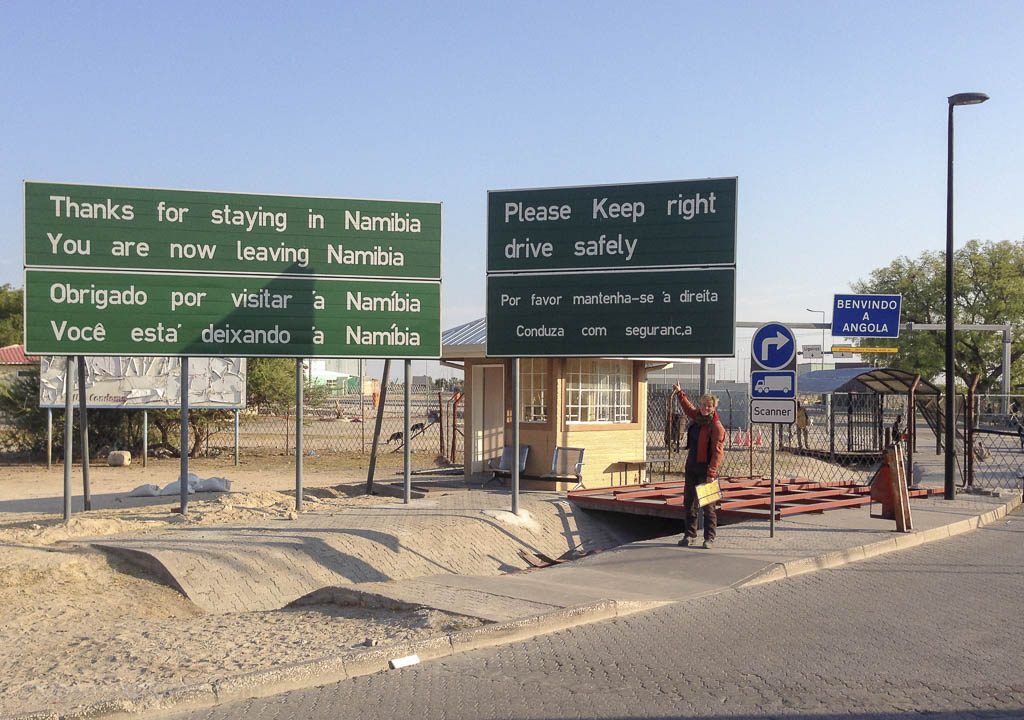
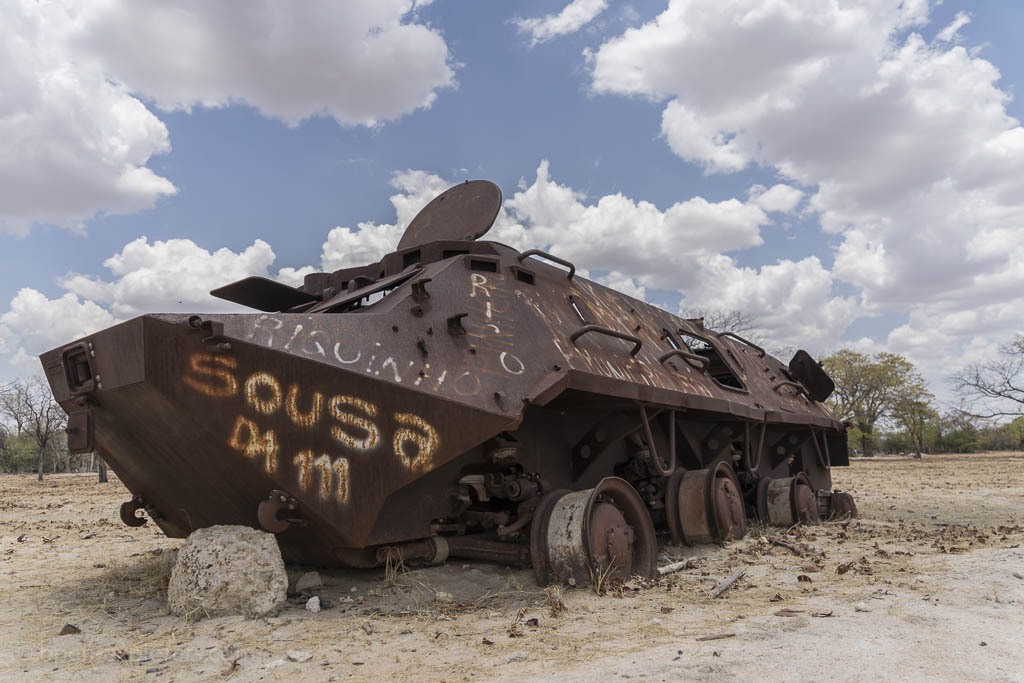
We passed heaps of those remnants of the civil war on our first day in Angola.
Am unserem ersten Tag in Angola haben wir zu Hauf diese Überbleibsel aus dem Bürgerkrieg am Straßenrand gesehen.
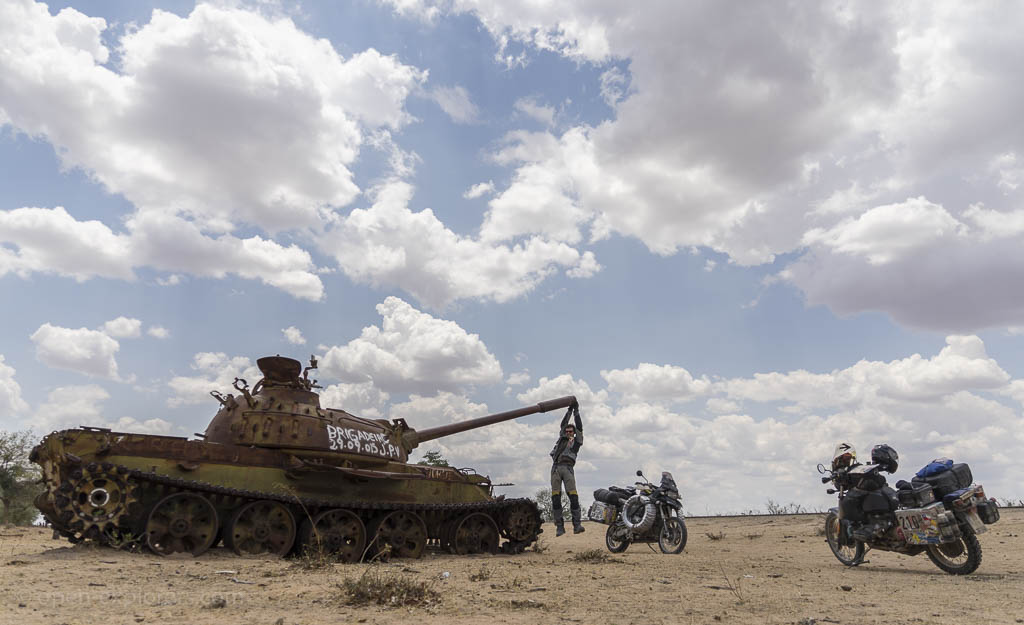
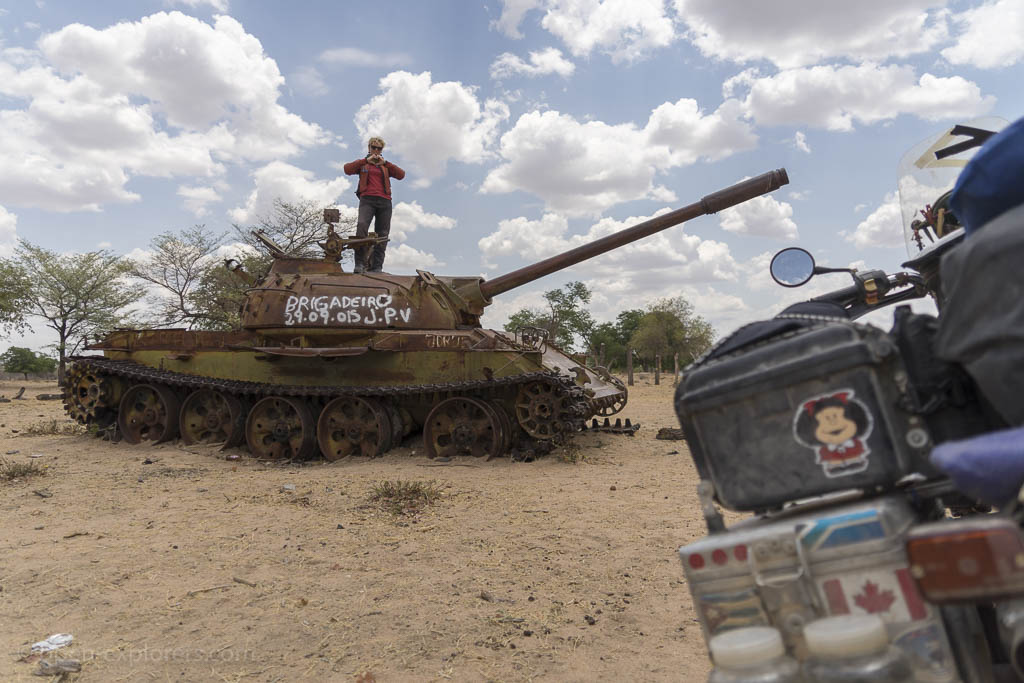
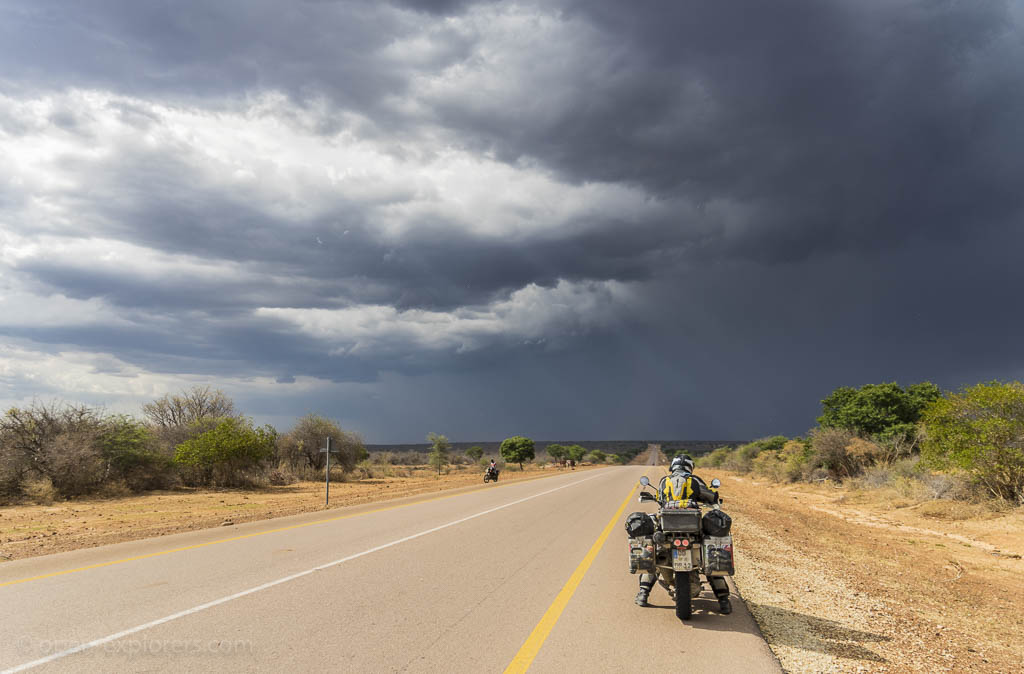
After riding through bone-dry Namibia for several months we got our first propper tropical down pour only about an hour after we crossed the border. It was time to dig out the rain gear from deep inside our panniers. From now on we would be rained on every single day.
Nachdem wir mehrere Monate durch das knochentrockene Namibia gefahren sind bekommen wir nur etwa eine Stunde hinter der Grenze unseren ersten richtigen Tropenschauer ab. Zeit die Regenklamotten aus den Tiefen der Koffer rauszukramen. Seit dem haben wir jeden Tag Regen abbekommen.
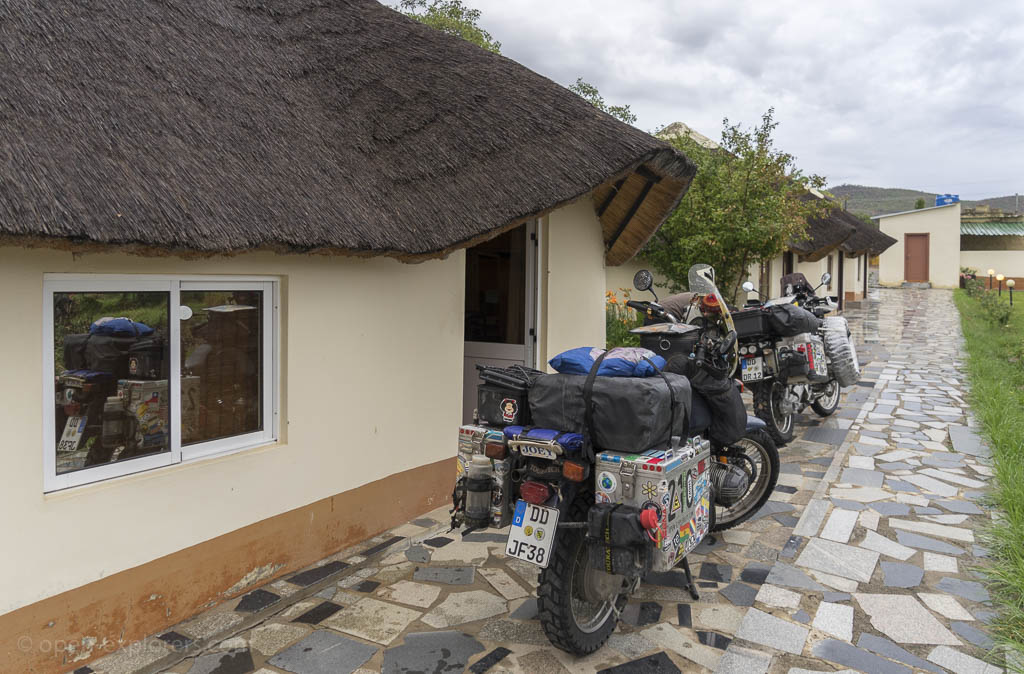
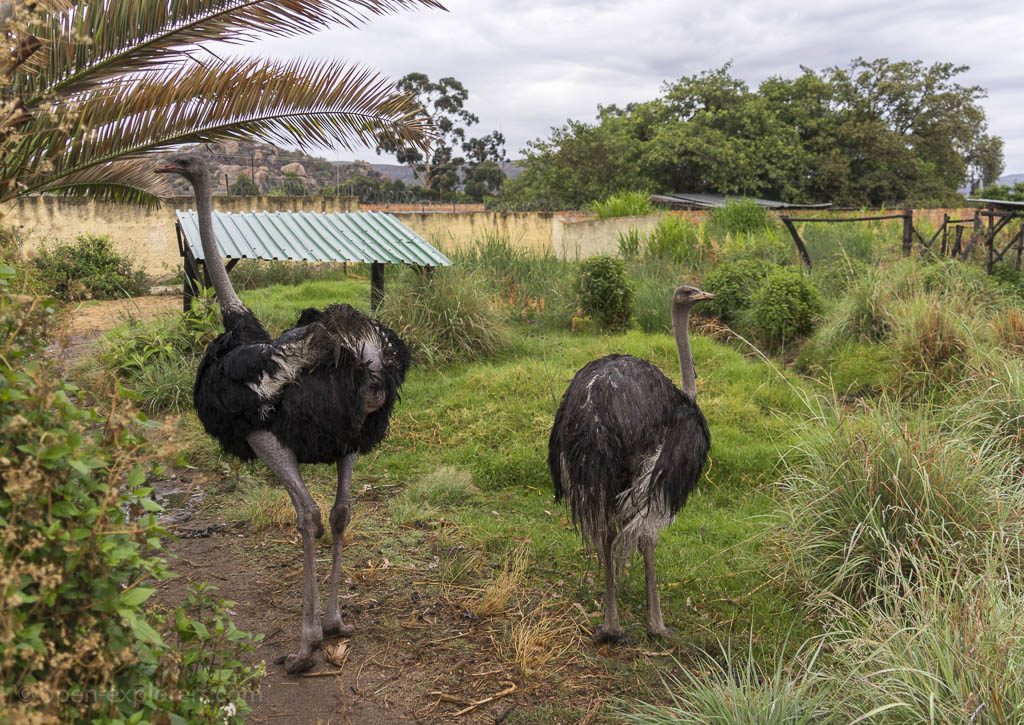
I finally got the chance to photograph ostriches. These guys were hanging out next to the bungalows and showed no intentions of running away like the shy animals usually do.
Endlich hab ich mal die Gelegenheit bekommen Straußen zu fotografieren. Die Kerle hingen hinter den Bungalows ab und machten keine Anstalten wegzurennen wie die scheuen Tiere es sonst tun.
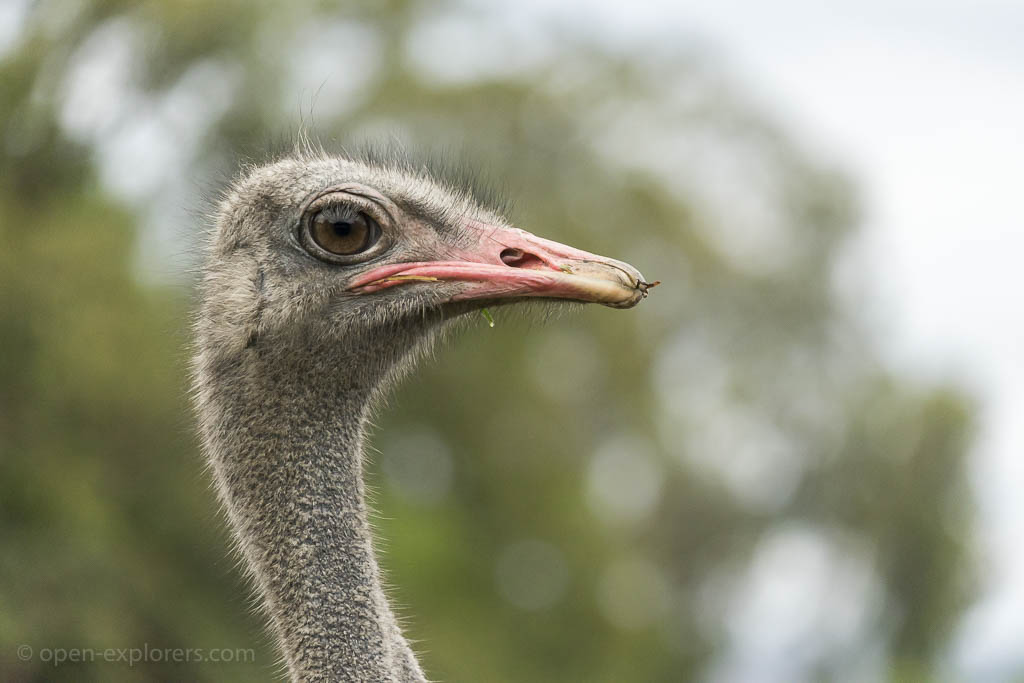
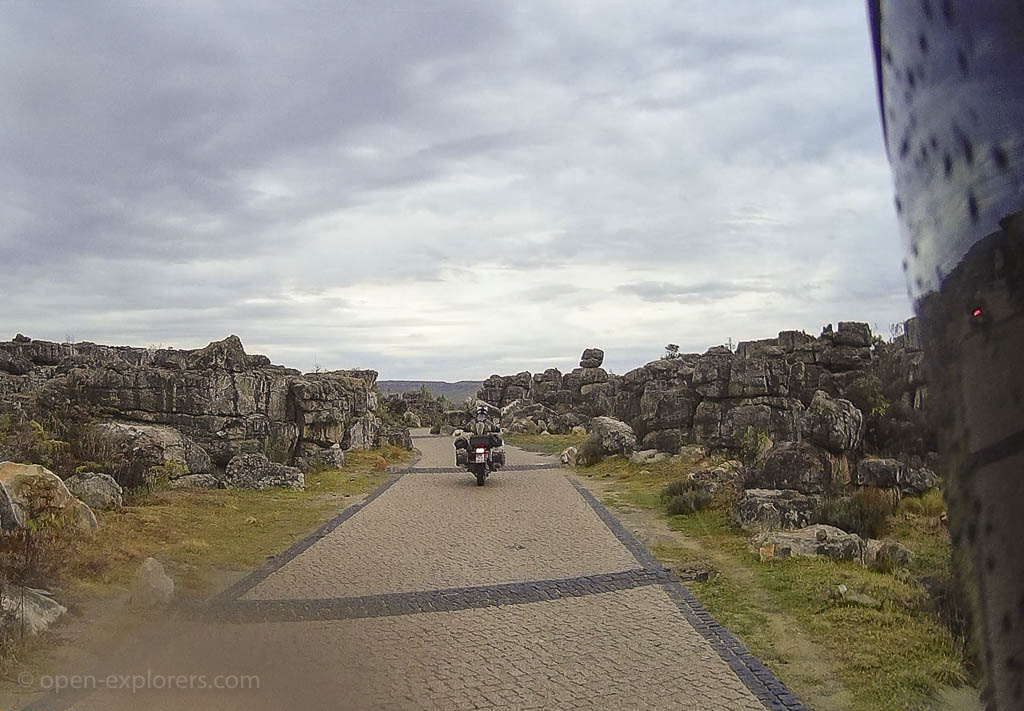
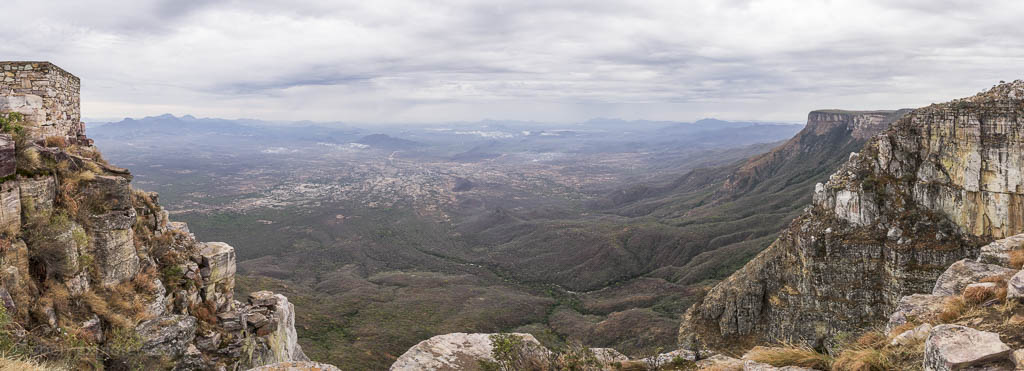
I think when people wrote Lubango was nice they meant its surroundings. Tundavala is a truly spectacular place where the cliffs of the Serra da Leba stand 2200m (7200 ft) tall. The difference in altitude between the rim and the plains below is an incredible 1.000m (3280 ft).
Ich glaub der jeniger der schrieb Lubango wäre schön meinte eigentlich Lubangos Umgebung. Tundavala ist ein wahrlich spektakulärer Ort auf den 2.200m hohen Klippen der Serra da Leba. Der Höhenunterschied zwischen dem Klippenrand und der darunterliegenden Eben beträgt beeindruckende 1.000 Meter.
